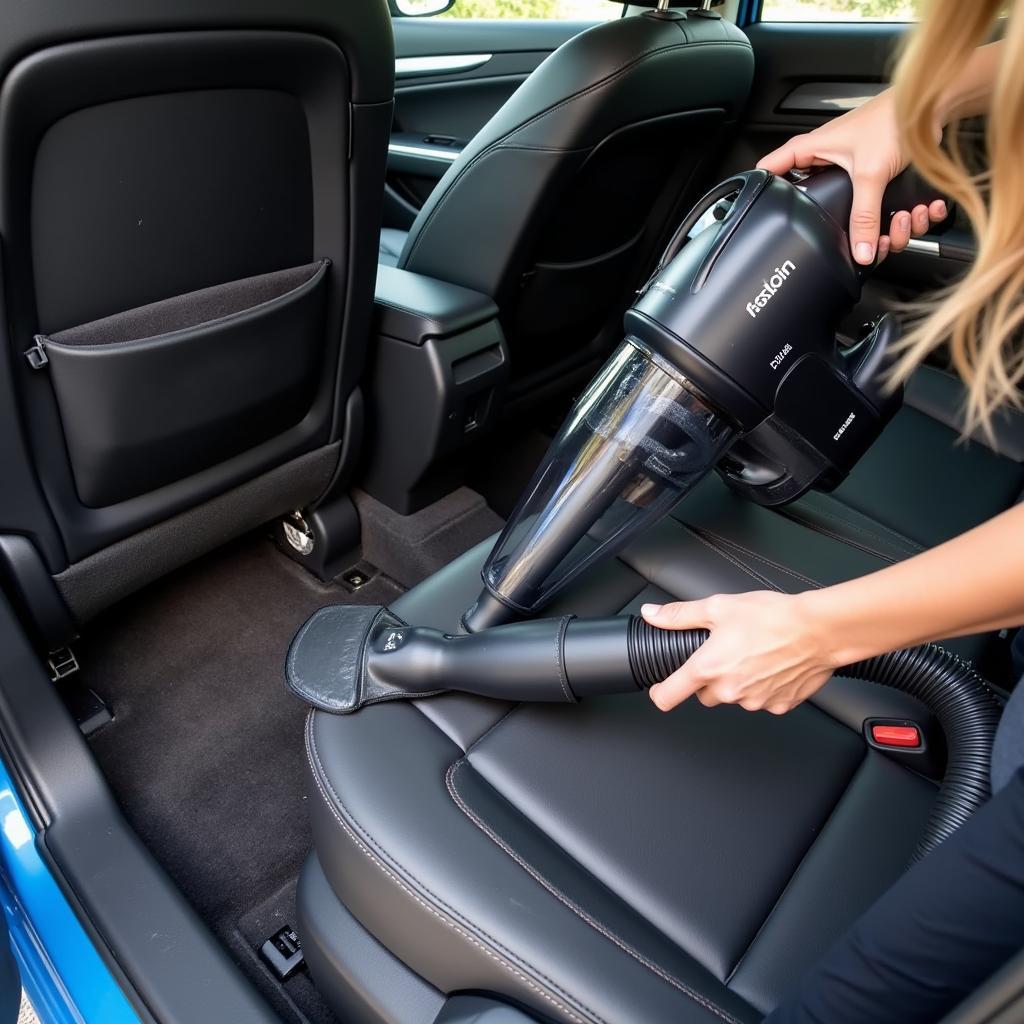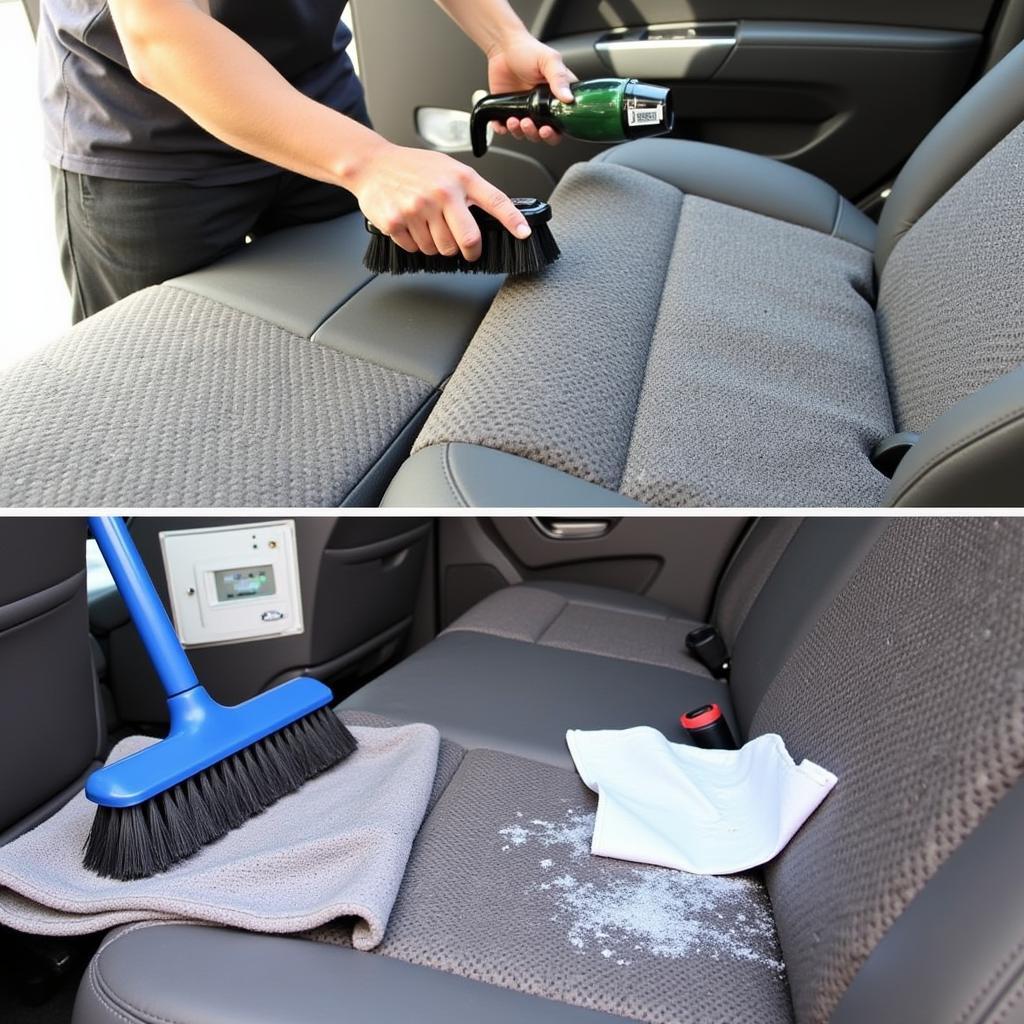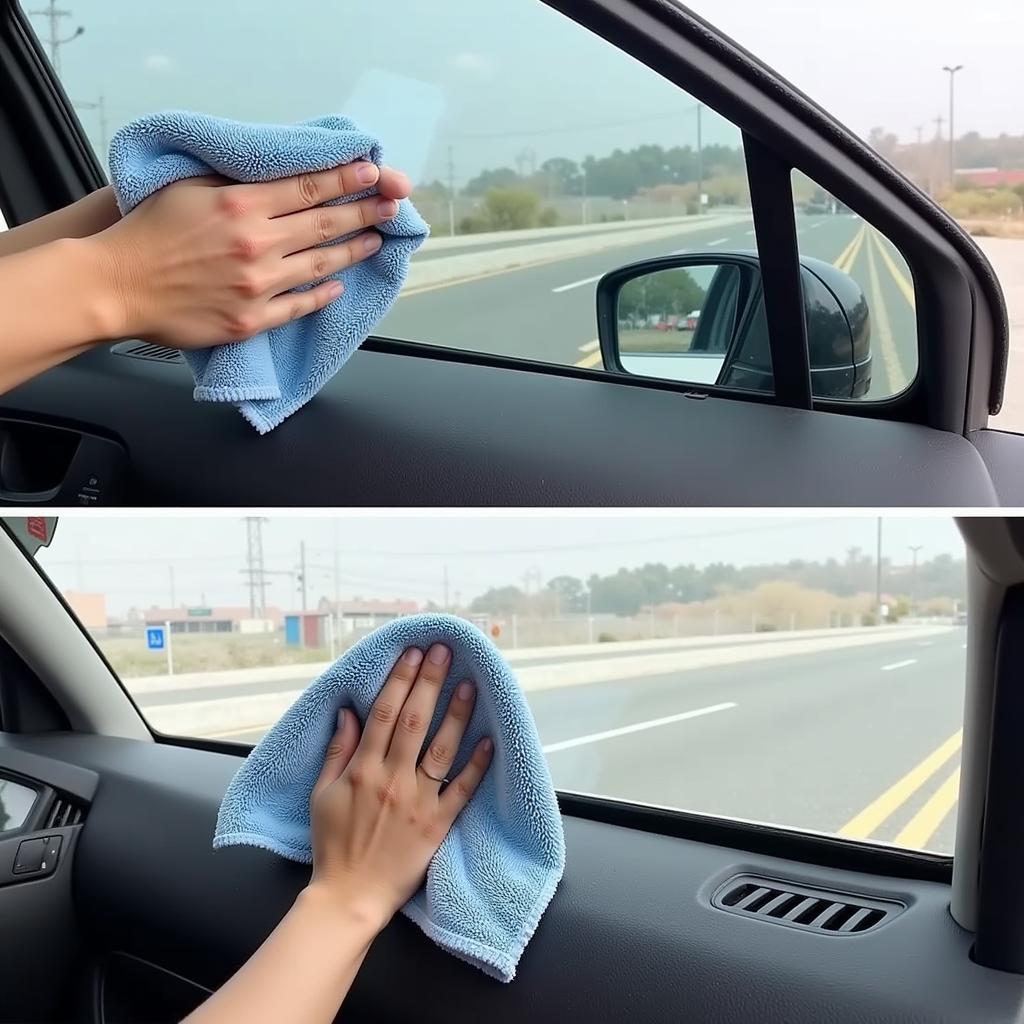Detailing the interior of your car not only enhances its appearance but also preserves its value and creates a more pleasant driving experience. A clean and well-maintained interior contributes to a healthier environment inside your vehicle, free from dust, allergens, and unpleasant odors. This guide provides a comprehensive walkthrough on how to detail your car’s interior like a pro, even at home.
Gathering Your Car Detailing Supplies
Before you start detailing the interior of your car, gather all the necessary supplies. This will ensure a smooth and efficient process. You’ll need:
- Cleaning Solutions: A good quality all-purpose cleaner, leather cleaner (if applicable), carpet and upholstery cleaner, and glass cleaner.
- Tools: Microfiber towels, detailing brushes (various sizes), a vacuum cleaner with attachments, a bucket, and a spray bottle.
- Optional Extras: A steam cleaner can be extremely helpful for deep cleaning upholstery and carpets, while an ozone generator can eliminate stubborn odors.
Starting with a Thorough Vacuum
The first step in detailing your car’s interior is to thoroughly vacuum every nook and cranny. Use the various attachments to reach under the seats, between the crevices of the dashboard, and along the door panels. Pay special attention to areas where dirt and debris tend to accumulate.
 Car Interior Vacuuming Process
Car Interior Vacuuming Process
Cleaning and Conditioning Leather Seats
If your car has leather seats, they require special care. Use a dedicated leather cleaner to gently wipe down the surfaces, followed by a leather conditioner to keep the leather supple and prevent cracking. Avoid using harsh chemicals or abrasive cleaners, which can damage the leather.
Deep Cleaning Upholstery and Carpets
For cloth upholstery and carpets, use a suitable cleaner and work it into the fabric with a brush. Allow it to dwell for a few minutes before extracting the dirt and cleaner with a wet/dry vacuum or by blotting with a clean microfiber towel.
 Car Upholstery Deep Cleaning
Car Upholstery Deep Cleaning
For a deeper clean, consider using a steam cleaner to remove embedded dirt and kill bacteria. Remember to test any cleaning solution on a hidden area first to ensure it doesn’t cause discoloration or damage.
Tackling the Dashboard and Door Panels
Clean the dashboard and door panels with an all-purpose cleaner and a microfiber towel. Use a detailing brush to reach tight spaces and vents. Be sure to use a gentle touch to avoid scratching delicate surfaces. For stubborn stains or sticky residue, a dedicated interior detailer can help.
Making the Windows Sparkle
Clean the interior windows with a high-quality glass cleaner and a clean microfiber towel. Avoid using ammonia-based cleaners, as they can damage tinted windows. For a streak-free finish, use a two-towel method: one towel to apply the cleaner and another to buff dry. Clean windows dramatically improve visibility and overall interior appearance.
 Cleaning Car Interior Windows
Cleaning Car Interior Windows
Don’t Forget the Small Details
Pay attention to the small details, such as the steering wheel, gear shift, and seat belts. These areas are frequently touched and can harbor germs and bacteria. Clean them thoroughly with an all-purpose cleaner or dedicated wipes. Adding a touch of car interior detailer can add shine and protection to these surfaces. You can also find valuable information about detailing your car interior yourself in our dedicated guide. Furthermore, we offer a complete guide on how to detail the interior of your car for those seeking a more comprehensive approach. If you’re looking to save money, our guide on how to detail your car interior at home will be particularly helpful.
Finishing Touches and Maintaining Your Clean Car
Once you’ve cleaned everything, consider using a protectant on vinyl and plastic surfaces to prevent fading and cracking. A fabric protectant can also help repel stains and spills on upholstery and carpets. A car air freshener or odor eliminator can leave your car smelling fresh and clean. Regularly cleaning and detailing your car’s interior not only maintains its appearance but also contributes to its longevity and your overall driving enjoyment. If you’re unsure about tackling the job yourself, check out our guide on how to detail a car interior yourself for additional tips and tricks.
Conclusion
Detailing your car’s interior is a rewarding task that can significantly enhance your driving experience. By following these steps and using the right products, you can achieve professional-level results at home. A clean and well-maintained car interior reflects positively on you and adds to the overall enjoyment of owning a vehicle. Regularly detailing the interior of your car will ensure it stays looking its best for years to come.
FAQs
- How often should I detail my car’s interior? Ideally, you should detail your car’s interior every 3-6 months, or more frequently if needed.
- What’s the best way to remove pet hair from car upholstery? A rubber glove or a pet hair removal tool can be effective in removing pet hair.
- Can I use household cleaners on my car’s interior? It’s best to use cleaners specifically designed for automotive interiors to avoid damage.
- How can I prevent my car’s interior from fading? Use a UV protectant spray on vinyl and plastic surfaces and park your car in the shade whenever possible.
- How do I remove sticky residue from my dashboard? Isopropyl alcohol or a dedicated adhesive remover can be effective in removing sticky residue.
- What’s the best way to clean leather car seats? Use a dedicated leather cleaner and conditioner to clean and protect your leather seats.
- How can I remove odors from my car’s interior? An ozone generator or baking soda can help eliminate stubborn odors.
For any assistance, please contact us via WhatsApp: +1(641)206-8880, or Email: [email protected]. Our customer service team is available 24/7.

Leave a Reply